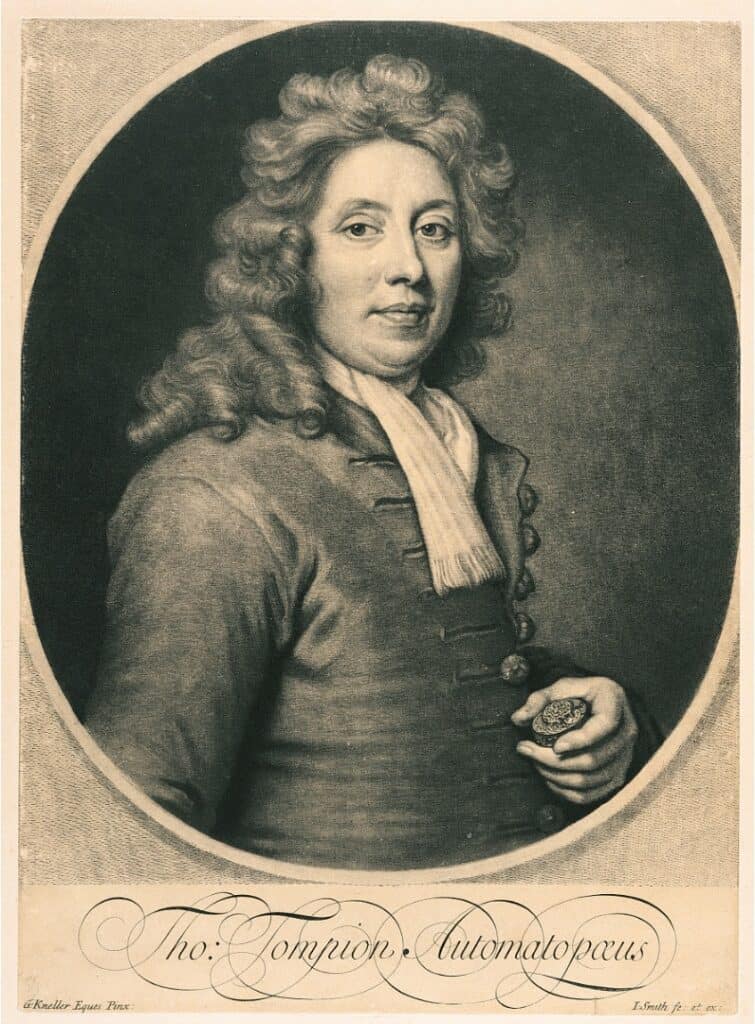In this occasional series, we will explore the life and achievements of the greatest and most respected horologists of their time. This feature will focus on Thomas Tompion, known as ‘The Father of English Clockmaking’, although he made many more watches than he did clocks. Tompion was more than a craftsman, he was a pioneer whose work set the standard for precision, beauty, and innovation in timekeeping.
Born in Bedfordshire, Tompion moved to London in 1671, where he soon worked with the great polymath Robert Hooke, inventor of the balance spring in 1675, that greatly improved the accuracy of watches. . Through Hooke he gained introductions to leading scientists, the nobility, and even the King. His skill quickly won him royal commissions from Charles II, William III, and Queen Anne.
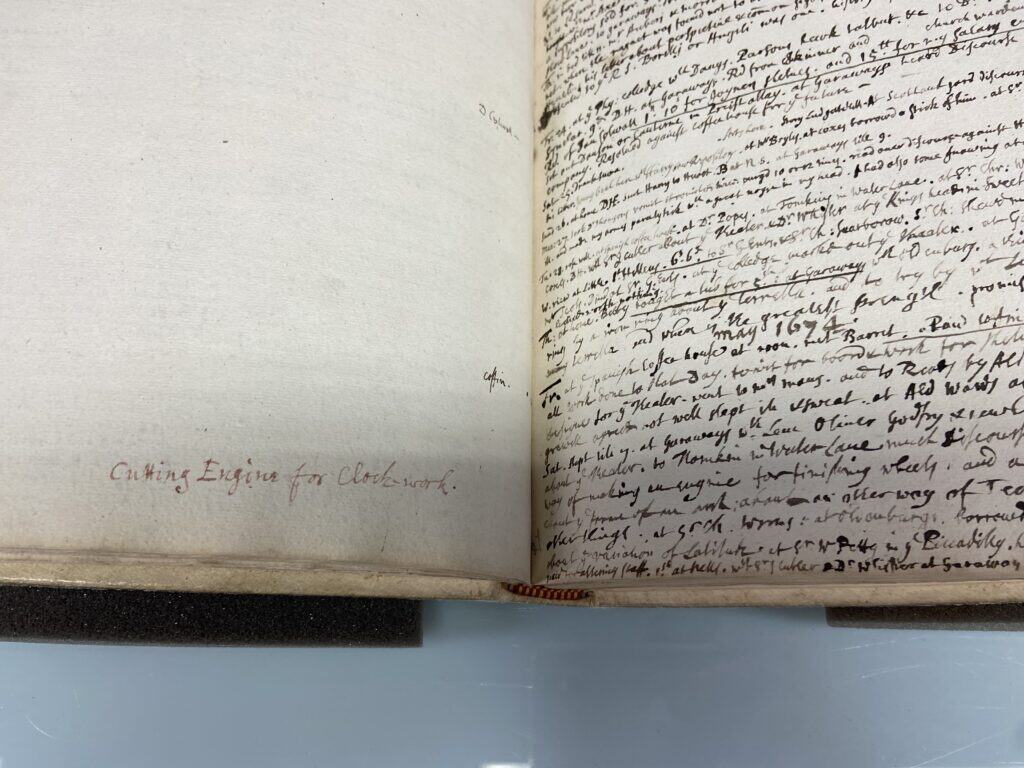
I had the privilege of seeing Hooke’s diary of 1674 (above), at the London Archives in which he wrote about his work. He notes on the opposite page, Cutting Engine for Clockwork. Hooke presented his invention, a machine designed to cut teeth for gears with a precision not achievable by hand to the Royal Society in 1672. This gear and wheel-cutting machine was later adopted by Tompion to improve the accuracy of his timepieces.
Tompion joined the Clockmakers’ Company as a specialist turret clockmaker. He was soon employed by Hooke meeting frequently in coffee houses in the City and at Gresham College, Bishopsgate, where Hooke introduced him to some of the great intellectuals and influencers of the period, including Christopher Wren, Jonas Moore and the Astronomer Royal John Flamsteed.
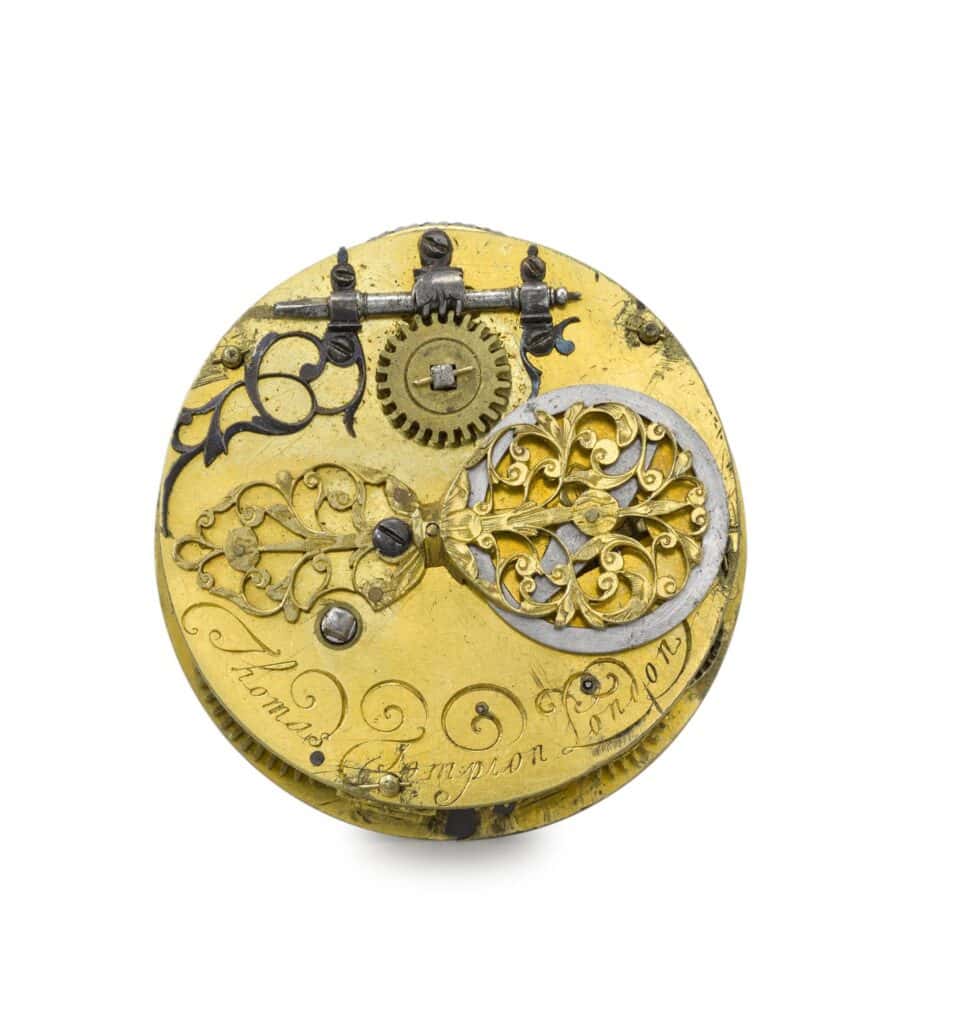
This early watch movement by Thomas Tompion, made around 1671, is a rare example from the pre-balance-spring era. It features a long screwed-on balance cock, a worm-and-wheel set-up, and a high-quality fusee movement, with no pinion having fewer than six leaves. The movement is signed in elegant script, Thomas Tompion, London.
Just a few years later, the balance spring transformed watchmaking, greatly improving accuracy. The invention was claimed by both Robert Hooke and Christiaan Huygens, sparking one of horology’s most famous disputes. To support his claim, Hooke asked Tompion to make a watch bearing the inscription R. Hooke invenit an. 1658. T. Tompion fecit 1675.
From then on, all Tompion watches incorporated the balance spring (see below). This 1671 movement is therefore of exceptional importance as it is the only known surviving Tompion watch without a balance spring, making it a landmark piece in the history of precision timekeeping.

His clocks and watches are not just instruments; they are masterworks that embody the evolution of mechanical horology at the dawn of the modern age. Today, his surviving pieces command extraordinary admiration and value among collectors, standing as cornerstones of serious horological collections.
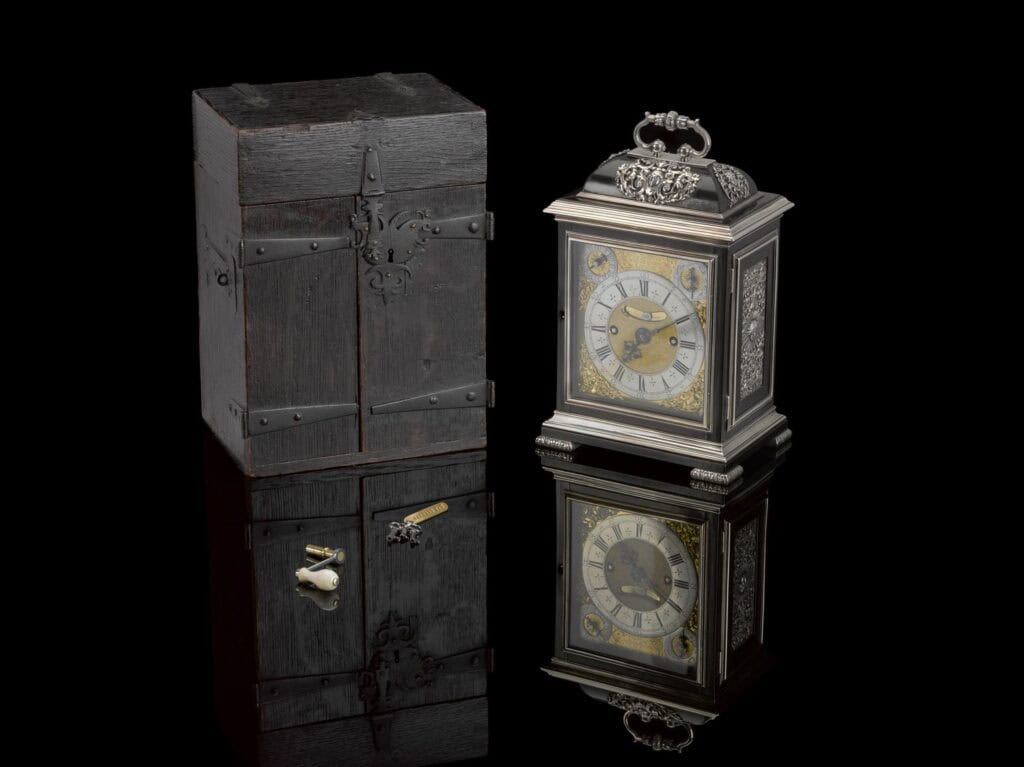
The miniature table clock above with striking mechanism has its original oak carry case and numbered 460 is known as the ‘Barnard Tompion’. It is thought to have been made for Queen Anne in c.1708 and was given to Andrew Stone by King George II before 1760. Stone was Royal Secretary to the King and also a tutor of the future King George III.
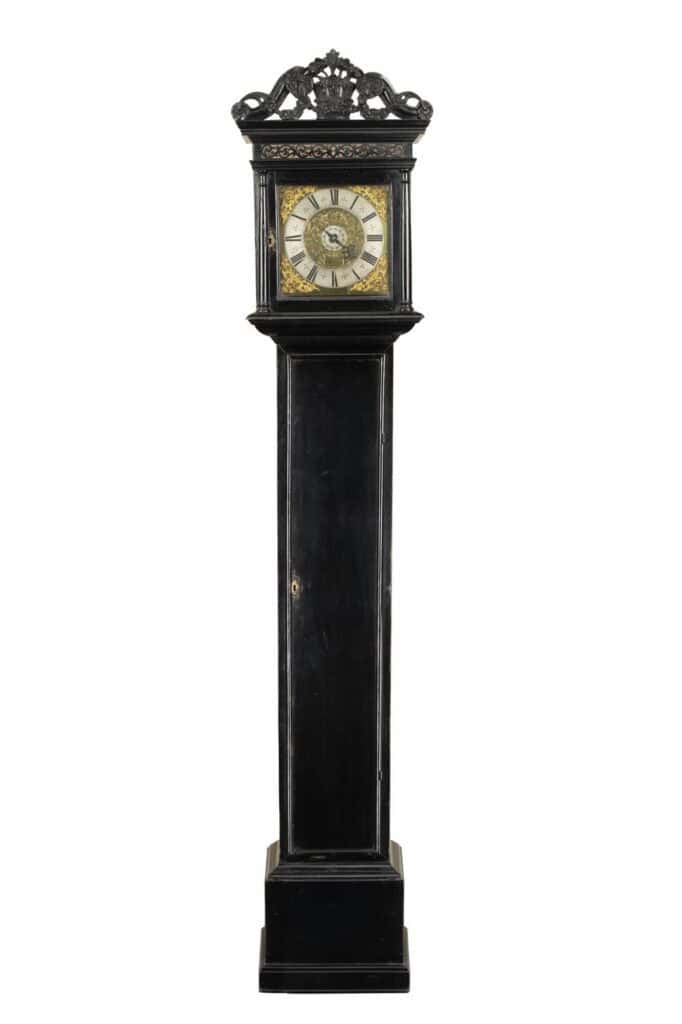
This longcase clock by Thomas Tompion made in London, c.1670-1685 has an ebonised pine case, with crested hood. The 10-inch square brass dial has engraved flowers with an alarm disc at the centre, a silvered chapter ring and angel spandrels in the corners. The single steel hour hand is pierced and the dial is engraved ‘Tho. Tompion, Londini, fecit’ at 6 o’clock. Tompion was known for producing high-grade expensive clocks. This clock would have been one of the cheaper clocks in the range produced at his workshop, and may have been made for the servant quarters of a larger house.
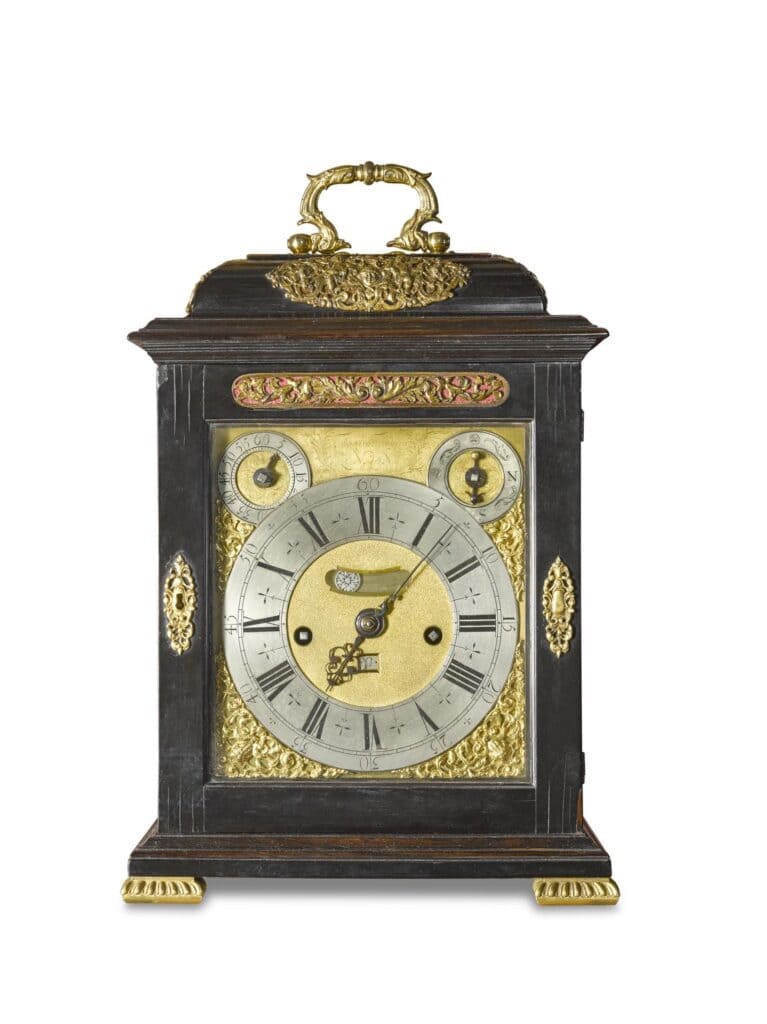
This spring driven striking table clock above with pull quarter repeat is numbered 243, and made by Thomas Tompion in London, c.1695. The oak case is veneered in ebony with a cushion top, gilt brass mounts, carrying handle, and glazed side apertures with unglazed frets above.
The gilt-brass dial with matted centre, has an applied silvered chapter ring, calendar and mock pendulum apertures, and steel hands. The subsidiary silvered dials at top are for pendulum regulation and strike/silent. The fusee movement is of 8 day duration with verge escapement and short pendulum, latched plates, and pull quarter repeating on one bell. The backplate is engraved all over and signed ‘Tho Tompion Londini fecit’.
Tompion employed numerous journeymen, apprentices and workers, taking Edward Banger and later George Graham into partnership. He was made Master of the Clockmakers’ Company in 1703. Upon his death in 1713, he was honored with burial in Westminster Abbey. He will always be remembered as one of the greatest horologists of his time if not all time.
Hero image: Thomas Tompion portrait, London, c.1697 Library of the Worshipful Company of Clockmakers.


